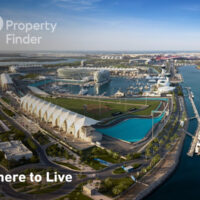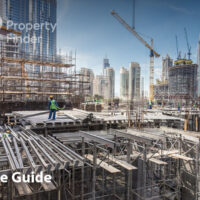
It results in time and cost savings and eases the decision-making process for buyers

SUHAIL ARFATH
Technology Evangelist, Autodesk
Low productivity has been a constant in the construction industry, raising costs and adding risk and waste across project lifecycles. The industry can no longer afford to lose money and time on construction inefficiencies due to poor collaboration across teams. This means projects have to become more cost and time-sensitive without compromising on quality. Today, we’ve come to a stage where all industry players starting from developers to individual contractors realise this reality and are ready to make positive changes. Technology is ready to provide the industry with the required tools. However, we still have a huge challenge to drive a change in mindset to acquire and leverage the new skills to deliver projects on budget, time and with the best quality.
The means of designing, making and using things is radically changing and technology is the catalyst of this change. The building industry is not an exception. Today, we see three major technology-driven disruptions catalysing a new era for the building design and construction industry:
Changes in the means of production – How owners plan, design, create and ultimately operate buildings and infrastructure assets
Changes in the nature of demand of owners and occupants – Developers are expected to deliver higher quality, on-budget, responsive and high-performing buildings. Decision making of buyers and investors have changed and the criteria used in the past are not relevant anymore.
Technology is at a point where it has the potential to redefine the decision-making process by creating unique opportunities for developers and end-users to conceptualise, visualise and experience their development or property
Changes in products – As assets, equipment and building systems become increasingly complex, they allow valuable data-driven insights that allow occupants to have more environmental, economic and social control over the lifecycle of buildings
Lately, we are witnessing an ever-increasing number of real estate projects being announced, built and commissioned, thus setting a high tone for the economic growth in the region for coming times ahead. Additionally, this benefits end-users by giving them a vast number of units to choose from. However, from a developer perspective, this scenario brings a lot of pressure. In the past, property buyers would make buying decisions considering very few dimensions such as price, location and potential for return on investment (RoI). Each developer would address these factors with 2D drawings, RoI calculation sheets and a mock-up of the end product.
Today, buyers/investors want to be engaged with throughout the project lifecycle, right from the design stage until handover, to ensure the project is designed considering all their demands, including the lifecycle cost. This means that developers have to be creative and competitive more than ever before to make it easier for buyers/investors to understand how their real estate is designed, built and will be operated in the future from the perspective of quality, cost and sustainability. This is where technologies such as virtual reality and augmented reality come into play to address these challenges.
Traditionally, developers built a unit as per their specifications. Once the property buyer took possession, they renovated it based on their preferences, resulting in money and materials being wasted by both the developer and the owner.
A recent report published by Frost & Sullivan stated that the total waste generated in the GCC is likely to increase from 94 million tonnes in 2015 to 120 million tonnes by 2020. In the GCC, waste composition has predominantly been construction, demolition and municipal. Furthermore, approximately 30 percent of materials are wasted on every construction site.
By giving end-users the ability to experience a property before it is built, developers can make the necessary design and architectural changes beforehand. This helps them to budget accordingly and potentially reduce almost all material wastage at construction sites, resulting in time and cost savings. We believe this experience provided to end-users will become the key differentiator for developers and projects, going forward.
However, the intelligence received need not be restricted to the quantity of construction materials alone. Software such as building information modelling (BIM) can provide exceptional insights on energy cost range, lighting analysis, solar analysis and more to get a holistic approach on a building’s performance. These factors help developers and end-users identify key energy performance drivers such as lighting power density, HVAC systems or glazing to forecast future expenses in maintaining their properties.
Consider two property developers – Developer A and Developer B – offering virtually identical projects in terms of development in the same location for sale. Developer A lists their unit for AED 1,000,000/- and Developer B lists their property for AED 1,200,000/-. Given that all things are virtually identical, customers would most certainly choose Developer A’s offering as it is AED 200,000/- cheaper. However, if we could predict the project’s lifetime cost, would things change?
For example, if the end-user is looking to sell the property after 10 years and the intuitive software was able to predict that the operating costs (energy, maintenance, etc.) for Developer A is AED 500,000/- and for Developer B is 100,000/- for that duration, then the total cost of the respective projects increases. The new cost, taking into consideration the intent to sell the property after a decade, to buy from Developer A is now AED 1,500,000/- and from Developer B is AED 1,300,000/-, making the latter more attractive in this scenario.
Technology is at a point where it has the potential to redefine the decision-making process by creating unique opportunities for developers and end-users to conceptualise, visualise and experience their development or property. The most important element of intuitive software is its ability to provide individuals with everything required – be it costs, sustainability and more – to make an informed decision about their purchase, therefore saving time, money and ensuring nothing ever goes to waste.



































